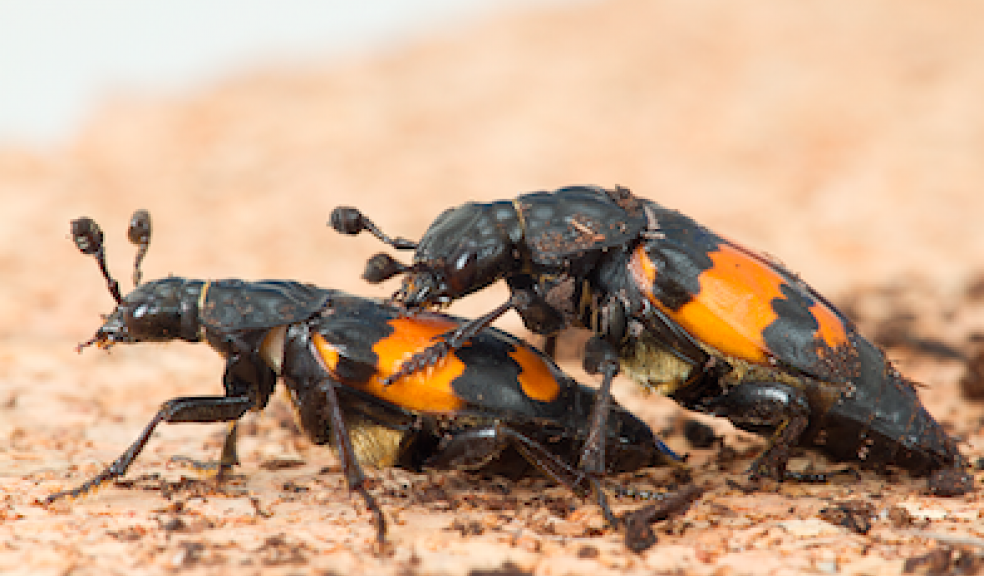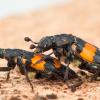
Too much sex causes genitals to change shape
Sexual conflict between males and females can lead to changes in the shape of their genitals, according to research on burying beetles by scientists at the University of Exeter.
The study, published today in the journal Evolution, provides new evidence that conflict over how often mating takes place can lead to males evolving longer penis-like organs and females larger ‘claws’ on their genitalia, within ten generations.
Genital shape varies enormously across the animal kingdom compared, for instance, to body shape. One reason for this may be that the shapes of male and female genitalia co-evolve as a result of sexual conflict. Dr Megan Head, one of the authors of the new study said: “It takes two to tango, so when changes in shape in one sex leads to corresponding changes in the other sex this is known as co-evolution.”
Sexual conflict over mating occurs because, whilst having lots of sex is usually good for a male -- as it increases the number of offspring he is likely to produce -- it is not so good for a female because she only needs to mate a few times to fertilise all her eggs. In addition too much sex can be costly for female burying beetles as it reduces their ability to provide parental care.
In order to test whether sexual conflict could lead to co-evolutionary changes in the shape of genitals the researchers artificially selected pairs of burying beetles for either high mating rates or low rates for ten generations. The research found that this artificial selection resulted in changes in the shapes of both male and female genitalia.
It also found that changes in one sex were reflected by changes in the shape of the other sex, showing there was co-evolution. The greatest changes in shape occurred in beetles selected for high mating rates, where sexual conflict was greatest: males evolved to have longer intromittent organs (penis-like structures) and females responded by evolving more pronounced ‘claws’ on their genitalia.
Dr Paul Hopwood, of the Centre for Ecology and Conservation at the University of Exeter, said: “Although we don’t know the ins and outs of how these genital structures relate to the reproductive success of each sex, our results show that sexual conflict over mating can lead to co-evolutionary changes in the shape of the genitals of burying beetles.”
He added: “Our research demonstrates the general importance of conflicts of interest between males and females in helping to generate some of the biodiversity that we see in the natural world. It’s fascinating how genital evolution can happen so fast – in ten generations – showing how rapidly evolutionary changes can occur.”
Selection on an antagonistic behavioral trait can drive rapid genital coevolution in the burying beetle Nicrophorus vespilloides by Paul E. Hopwood, Megan L. Head, Eleanor J. Jordan, Mauricio J. Carter, Emma Davey, Allen J. Moore & Nick J. Royle is published in the journal Evolution.













